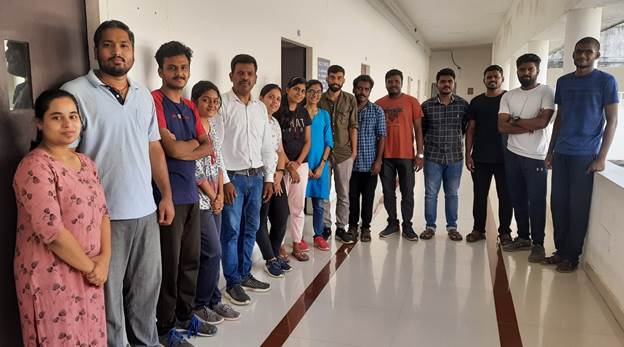Tirupati, India: In a groundbreaking development, researchers have unveiled a novel synthetic method to produce hydrogen gas from a mixture of methanol and paraformaldehyde under mild conditions. This method, which has shown exceptional efficiency in the transfer hydrogenation of alkynes to alkenes, presents a promising approach for hydrogen storage and transportation, thereby paving the way for advancements in chemical synthesis and sustainable energy solutions.
With the rapid depletion of fossil fuels, the quest for alternative energy sources has become increasingly urgent. Hydrogen gas, known for its potential to replace fossil fuels in energy storage, transportation, and various chemical processes, has emerged as a key candidate in this search. Methanol and paraformaldehyde, both abundantly produced on a large scale, have been identified as viable hydrogen carriers. Their widespread availability offers significant advantages over the use of free hydrogen for storage and transport.
The research team, led by Prof. Ekambaram Balaraman at the Indian Institute of Science Education and Research (IISER) Tirupati, has successfully utilized commercially available nickel catalysts to generate hydrogen from methanol and paraformaldehyde. Remarkably, this process does not require bases or activators, making it both efficient and straightforward. The generated hydrogen was effectively employed in the chemo- and stereo-selective partial transfer hydrogenation of alkynes, facilitating the production of bioactive molecules with enhanced synthetic value.
Supported by the Advanced Nano Research Facility (ANRF), formerly known as the Science and Engineering Research Board (SERB) of the Department of Science and Technology (DST), this research is set to be published in the journal Catalysis Science & Technology. The study highlights a new avenue for COx-free hydrogen generation, contributing significantly to the advancement of a ‘Hydrogen economy.’
Prof. Balaraman emphasized the potential impact of this development: “The ability to efficiently produce hydrogen from methanol and paraformaldehyde under mild conditions represents a significant step forward in our efforts to develop sustainable energy solutions. This method not only enhances our capacity for hydrogen storage and transportation but also opens new possibilities for chemical synthesis.”
The utilization of methanol and paraformaldehyde as hydrogen carriers offers a robust solution to the increasing global energy demands. This innovative approach underscores the importance of sustainable and renewable resources, marking a crucial advancement in the pursuit of alternative energy sources.





